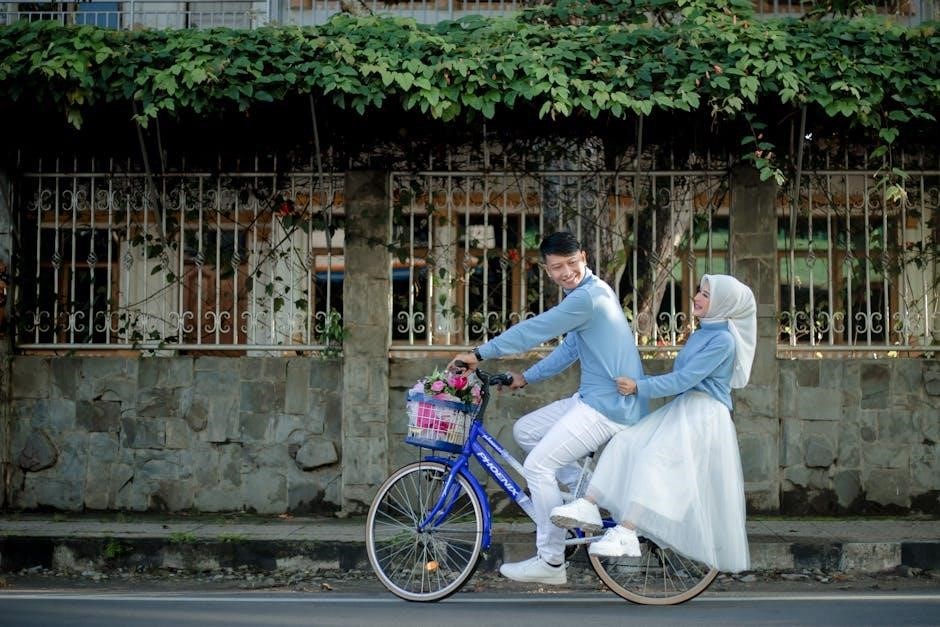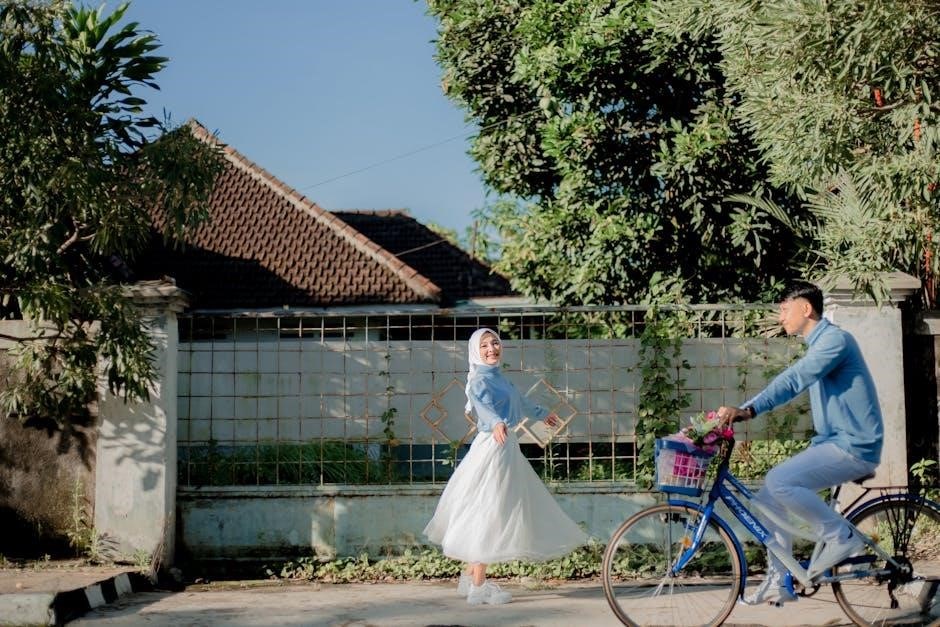“Hills Like White Elephants” PDF: An Overview
Ernest Hemingway’s “Hills Like White Elephants” is a concise yet powerful short story often accessed via PDF format. The story centers around a couple, Jig and an American man, at a Spanish train station. They are facing a life-altering decision, subtly conveyed through their terse dialogue and symbolic setting, creating a tense atmosphere surrounding their conversation.
Publication History of “Hills Like White Elephants”
“Hills Like White Elephants,” a celebrated short story by Ernest Hemingway, boasts a notable publication history. It initially appeared in the literary magazine transition in August 1927, marking its first introduction to the reading public. Shortly thereafter, in October 1927, the story was included in Hemingway’s second short story collection, Men Without Women, published by Charles Scribner’s Sons. This collection further solidified the story’s place within Hemingway’s broader body of work and ensured its accessibility to a wider audience.
The story has since been widely anthologized and reprinted in numerous collections of short fiction, cementing its status as a classic of American literature. Its inclusion in educational curricula has also contributed to its enduring popularity and critical acclaim. The story’s availability in PDF format has further expanded its reach, allowing readers to easily access and study it in both academic and personal settings. Different versions and editions might exist, but the core text remains consistent, preserving Hemingway’s original narrative and style. The story continues to be analyzed and discussed, a testament to its lasting impact.
Setting and Context of the Story
The setting of “Hills Like White Elephants” is crucial to understanding the story’s themes and underlying tension. The narrative unfolds at a train station nestled in the valley of the Ebro in Spain. The station is positioned between two contrasting landscapes: one side barren with “no shade and no trees,” and the other offering a view of fertile fields and distant hills. This physical division mirrors the emotional divide between the two characters, Jig and the American man, as they grapple with a difficult decision regarding their future.
The time frame of the story is likely the 1920s, a period of social change and shifting attitudes towards women’s roles and reproductive rights. This historical context adds another layer of complexity to the narrative, as the characters navigate a situation that carries significant social and personal implications. The train station itself serves as a liminal space, a place of transition and uncertainty, reflecting the crossroads at which Jig and the man find themselves. The warm shadow of the building and the bead curtain offer a temporary respite from the harsh sun, but the underlying tension remains palpable.

Characters in “Hills Like White Elephants”
The story revolves around two central characters: Jig, the young woman, and the American man. Their interaction, laden with unspoken emotions and veiled intentions, forms the core of the narrative. Their contrasting perspectives and desires drive the conflict, highlighting themes of choice and communication breakdown.
Jig’s Character Analysis

Jig, the female protagonist in Ernest Hemingway’s “Hills Like White Elephants,” is a complex character grappling with a significant life decision. She displays a sense of uncertainty and ambivalence throughout the story, evident in her hesitant responses and longing gazes at the surrounding landscape.
Jig’s youth and vulnerability are palpable, contrasting with the American man’s seemingly unwavering stance. Her observation that the hills resemble white elephants suggests a desire for something unique and precious, perhaps symbolizing the potential of motherhood or a different path in life.
She is perceptive and attuned to the nuances of their conversation, often picking up on the underlying tensions and unspoken desires. Jig’s emotional state is a central focus of the story, and her internal conflict highlights the weight of the decision she faces.
Ultimately, Jig’s character embodies the struggle for autonomy and self-determination in a relationship where power dynamics are skewed. Her final decision, though ambiguous, carries the weight of her emotional journey and the search for her voice.
She represents the emotional core of the story, a young woman on the cusp of adulthood, confronting a difficult choice with profound implications for her future and her relationship.
The American Man’s Character Analysis
The American man in Hemingway’s “Hills Like White Elephants” is a figure of subtle yet distinct control and manipulation. He presents himself as rational and supportive, yet his persistent suggestions reveal a clear agenda regarding Jig’s pregnancy. His desire for a “simple operation” underscores his wish to avoid the responsibilities and complexities of parenthood.
He attempts to influence Jig by framing the abortion as a means to maintain their existing lifestyle and happiness. He assures her that it’s a straightforward procedure and that they can return to their carefree existence afterward. However, his reassurances ring hollow, failing to address Jig’s deeper emotional concerns.
The man’s communication style is characterized by avoidance and indirectness. He rarely expresses his true feelings, instead relying on carefully chosen words to steer the conversation in his preferred direction. His actions betray a self-centeredness, prioritizing his desires above Jig’s emotional well-being.
He embodies a certain type of masculine detachment, common in Hemingway’s works, where emotions are suppressed, and control is paramount. He appears unwilling to fully engage with the emotional weight of the situation, opting for a seemingly pragmatic approach that ultimately disregards Jig’s autonomy and feelings.

Themes in “Hills Like White Elephants”
“Hills Like White Elephants” explores themes of communication breakdown, choice, and control within a relationship facing a difficult decision. The story delicately portrays the tension between the couple as they navigate a conversation laden with unspoken emotions and conflicting desires about the future.
The Theme of Communication Breakdown
A central theme in Ernest Hemingway’s “Hills Like White Elephants” is the profound communication breakdown between Jig and the American man. Their dialogue, marked by terse exchanges and avoidance of direct confrontation, reveals a significant inability to openly and honestly discuss the crucial decision they face. The man, in his attempts to persuade Jig, often resorts to minimizing the procedure’s significance, while Jig’s responses are laced with a growing sense of uncertainty and resentment.
This breakdown in communication is further emphasized by their reliance on coded language and indirect allusions. The “white elephants” themselves become a symbol of the unspoken issue, a burden that weighs heavily on their relationship. The setting, a stark and barren landscape, mirrors the emotional aridity that pervades their interaction. They struggle to find common ground, their desires and fears creating an unbridgeable chasm between them.
The story highlights how a lack of genuine communication can lead to misunderstandings, resentment, and ultimately, a deterioration of intimacy. The couple’s inability to truly listen to each other’s concerns and perspectives underscores the fragility of their bond, leaving the reader to question the future of their relationship.
The Theme of Choice and Control
In “Hills Like White Elephants,” the theme of choice and control is intricately woven into the narrative, highlighting the power dynamics between Jig and the American man. The central conflict revolves around Jig’s pregnancy and the man’s subtle yet persistent pressure for her to undergo an abortion. He frames the procedure as a simple solution, a way to regain their carefree lifestyle, thus attempting to control her decision.
However, Jig’s internal struggle underscores her own desire for autonomy. She contemplates the implications of both choices – continuing the pregnancy or terminating it – recognizing that each path holds different consequences for her life and their relationship. Her gaze towards the hills, described as “white elephants,” symbolizes the weighty decision and her longing for a sense of control over her own body and future.
The story explores how societal expectations and gender roles can influence an individual’s perception of choice. The man’s attempts to manipulate Jig’s decision reflect a patriarchal mindset, where the woman’s agency is often undermined. Ultimately, the narrative leaves the reader questioning whether Jig will succumb to the man’s pressure or assert her own will, making a choice that aligns with her own values and desires.

Symbolism in “Hills Like White Elephants”
Ernest Hemingway’s “Hills Like White Elephants” employs rich symbolism, enhancing the story’s depth. The hills themselves, the train station, and even the drinks ordered by the characters all serve as potent symbols, reflecting the central conflict and the characters’ internal states as they approach a crucial decision.
Symbolism of the White Elephants
The most prominent symbol in Hemingway’s “Hills Like White Elephants” is, undoubtedly, the white elephants themselves. Jig initially points out the hills, remarking that they resemble white elephants, setting in motion a complex layer of interpretation. A “white elephant,” traditionally, is a possession that is more trouble than it is worth, a burdensome gift that becomes an encumbrance. This definition immediately suggests the unborn child as a potential “white elephant” in the couple’s relationship, particularly from the man’s perspective.
However, the symbolism is not so straightforward. For Jig, the “white elephants” might represent the beauty and potential of the pregnancy, something unique and precious, contrasting with the man’s desire for a simpler, unburdened life. The ambiguity of the symbol reflects Jig’s own ambivalence towards the impending decision. She sees the hills as beautiful, but also recognizes the potential difficulties and changes that motherhood would bring.
Furthermore, the “white elephant” can also represent the relationship itself. Perhaps the relationship has become a burden, a “white elephant” that the man wishes to discard, while Jig clings to the hope of its potential. The argument surrounding the operation highlights the strain and miscommunication that threatens to break them apart.
Ultimately, the symbolism of the white elephants remains open to interpretation, mirroring the uncertainty and lack of explicit communication within the story. The reader is left to ponder the true meaning, adding to the story’s enduring power.
Symbolism of the Train Station
The train station in “Hills Like White Elephants” serves as a potent symbol of choice, transition, and the diverging paths that Jig and the American man face. Located between Barcelona and Madrid, the station represents a literal and figurative crossroads. Barcelona, on one side, can be interpreted as representing a continuation of their current lifestyle, perhaps childless and carefree. Madrid, on the other hand, symbolizes a significant change, potentially embracing parenthood and all the responsibilities it entails.
The fact that the train can go in either direction emphasizes the couple’s pivotal decision. They are at a point where they must choose which path to take, and the train station underscores the gravity of that choice. The station itself is described as being in a barren landscape, with “no shade and no trees,” highlighting the starkness and lack of comfort surrounding their situation. This emphasizes the emotional aridity in their relationship, a direct consequence of the difficult decision they must make.
Adding another layer of symbolism, the station is a place of waiting. Jig and the man are waiting for the train, but they are also waiting for each other to make a decision. This waiting amplifies the tension and uncertainty, as neither seems willing to fully commit to a particular course of action. The train station, therefore, is not merely a physical location but a representation of their emotional limbo, a space where they must confront their conflicting desires and make a life-altering choice.
